 ArtykułyKsiążki o przyrodzie: daj się ponieść pięknu i sile natury podczas lektury!
ArtykułyKsiążki o przyrodzie: daj się ponieść pięknu i sile natury podczas lektury! Anna Sierant4
Anna Sierant4![Tu streszczenia nie wystarczą. Sprawdź swoją znajomość lektur [QUIZ]](https://s.lubimyczytac.pl/upload/texts/20500/20558/20558_1715340025_grafika400x300.jpg) ArtykułyTu streszczenia nie wystarczą. Sprawdź swoją znajomość lektur [QUIZ]
ArtykułyTu streszczenia nie wystarczą. Sprawdź swoją znajomość lektur [QUIZ] Konrad Wrzesiński37
Konrad Wrzesiński37 ArtykułyCzytamy w weekend. 10 maja 2024
ArtykułyCzytamy w weekend. 10 maja 2024 LubimyCzytać417
LubimyCzytać417 Artykuły„Lepiej skupić się na tym, żeby swoją historię dobrze opowiedzieć”: wywiad z Anną Kańtoch
Artykuły„Lepiej skupić się na tym, żeby swoją historię dobrze opowiedzieć”: wywiad z Anną Kańtoch Sonia Miniewicz2
Sonia Miniewicz2
- Polecamy
Dreaming in Code: Two dozen programmers, three years, 4,732 bugs, and one quest for transcendent software
Scott Rosenberg Wydawnictwo: Crown Publishing Group informatyka, matematyka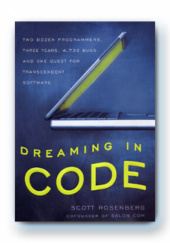 416 str. 6 godz. 56 min.
416 str. 6 godz. 56 min.- Kategoria:
- informatyka, matematyka
- Wydawnictwo:
- Crown Publishing Group
- Data wydania:
- 2007-01-16
- Data 1. wydania:
- 2007-01-16
- Liczba stron:
- 416
- Czas czytania
- 6 godz. 56 min.
- Język:
- angielski
- ISBN:
- 9780307381446
Why is software so hard?
Hard to make well. Hard to deliver on time. Hard to use.
Our civilization runs on software. Yet the art of creating it continues to be a dark mystery, even to the experts, and the greater our ambitions, the more spectacularly we seem to fail.
Dreaming in Code: Two Dozen Programmers, Three Years, 4,732 Bugs, and One Quest for Transcendent Software sets out to understand why, through the story of one software project -- Mitch Kapor's Chandler, an ambitious, open-source effort to rethink the world of e-mail and scheduling.
I spent three years following the work of the Chandler developers as they scaled programming peaks and slogged through software swamps. In Dreaming in Code I tell their stories.Porównaj ceny
iPorównywarka z zawsze aktualnymi cenami
W naszej porównywarce znajdziesz książki, audiobooki i e-booki, ze wszystkich najpopularniejszych księgarni internetowych i stacjonarnych, zawsze w najlepszej cenie. Wszystkie pozycje zawierają aktualne ceny sprzedaży. Nasze księgarnie partnerskie oferują wygodne formy dostawy takie jak: dostawę do paczkomatu, przesyłkę kurierską lub odebranie przesyłki w wybranym punkcie odbioru. Darmowa dostawa jest możliwa po przekroczeniu odpowiedniej kwoty za zamówienie lub dla stałych klientów i beneficjentów usług premium zgodnie z regulaminem wybranej księgarni.
Za zamówienie u naszych partnerów zapłacisz w najwygodniejszej dla Ciebie formie:
• online
• przelewem
• kartą płatniczą
• Blikiem
• podczas odbioru
W zależności od wybranej księgarni możliwa jest także wysyłka za granicę. Ceny widoczne na liście uwzględniają rabaty i promocje dotyczące danego tytułu, dzięki czemu zawsze możesz szybko porównać najkorzystniejszą ofertę.Szukamy ofert...
Patronaty LC
Mogą Cię zainteresować
Oceny
Książka na półkach
- 1
- 1
Cytaty
Bądź pierwszy
Dodaj cytat z książki Dreaming in Code: Two dozen programmers, three years, 4,732 bugs, and one quest for transcendent software
Dodaj cytatPowiązane treści
Podobne książki
Przeczytaj także





























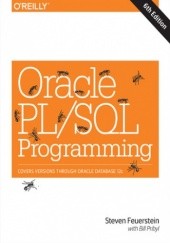




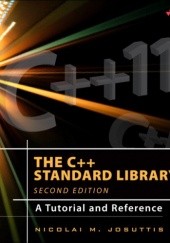






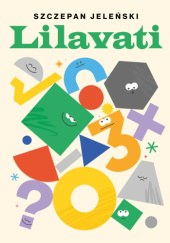

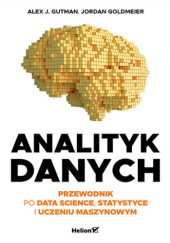

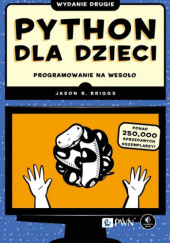
OPINIE i DYSKUSJE
In this book author describes the process of creating ambitious software application Chandler. This application was supposed to help people manage their emails, todo lists, calendars, meetings, etc. Chandler team wanted to develop best software which functionalities excel any existing PIM (Personal Information Manager). It would be open source and free (source code will be available for anyone, so users could make own changes in Chandler code too). Author accompanied software company for 3 years and finally published this book, when they still did not had first stable version of their product and there was still a lot of things to finish before there will have initial stable version. They finally released the software in 2008, after publication of this book and quickly abandoned it.
The story of Chandler development shows how not to design and create software. Chandler team got enormous resources and time to develop their dream software. They planned to create very big application from the start instead of creating MVP (Minimum viable product). They spend a lot of time on design and meetings before any coding work was done. They where ultra optimistic in terms of estimates for work to be done. They made many bad decisions, created own solutions for things which they could take of shelf, they spent a lot of time not working on Chandler, but on tools and placeholders for future features.
Most of the book content does not describe strictly Chandler development issues and progress. It looks that 2/3 of the book is about general issues which are common when developing software. There is some content about software development history and description of different concepts for the future of software development. A lot of space is used to describe the issues which programmers and managers face during such projects. The main point of this book is that making software is hard and often fails to meet expectations and software is rarely delivered on time and on budget. There are multiple reasons for it, both technical and human.
Many years has passed and many of the issues described here are still relevant. But there was small progress made in the following decade (author cites report from 2004). More software teams now use iterative approach to develop initial version of the software quickly and later improve it using user feedback, which gives better results than “waterfall” approach with no or very long iterations. Chaos report measures rate of success in IT projects and shows, that the rate of success slightly improved, but there are still a lot of challenged and failed projects. And I suspect that due to nature of software development and increased demand for software and human weaknesses, it will take long time to improve these statistics further (if it is still possible). As commonly mentioned in this book, Brook once wrote that there is no silver bullet for these issues. Data shows that despite measurable improvements when using Agile methodology, there are still a lot of failed and challenged projects which are Agile. Many things in software development are not easily to compare or measure, so a lot of different advocates (and sometimes cultist) still argue what is the best methodology/tool/framework etc. to do the job and I suspect that there will be probably no end to these arguments.
I work in software industry for many years and read The Mythical Man-Month before. If you read this book before and you know some stuff about software development history and software development issues, I suspect that you do not find a lot of interesting things here. This book also describes a lot of terms and processes during software developments. This was probably written in such way to make whole book more understandable for non programmers. I personally was a little bored when reading some parts of this book, probably because I was familiar with many of the concepts described here.
In this book author describes the process of creating ambitious software application Chandler. This application was supposed to help people manage their emails, todo lists, calendars, meetings, etc. Chandler team wanted to develop best software which functionalities excel any existing PIM (Personal Information Manager). It would be open source and free (source code will be...
więcej Pokaż mimo to